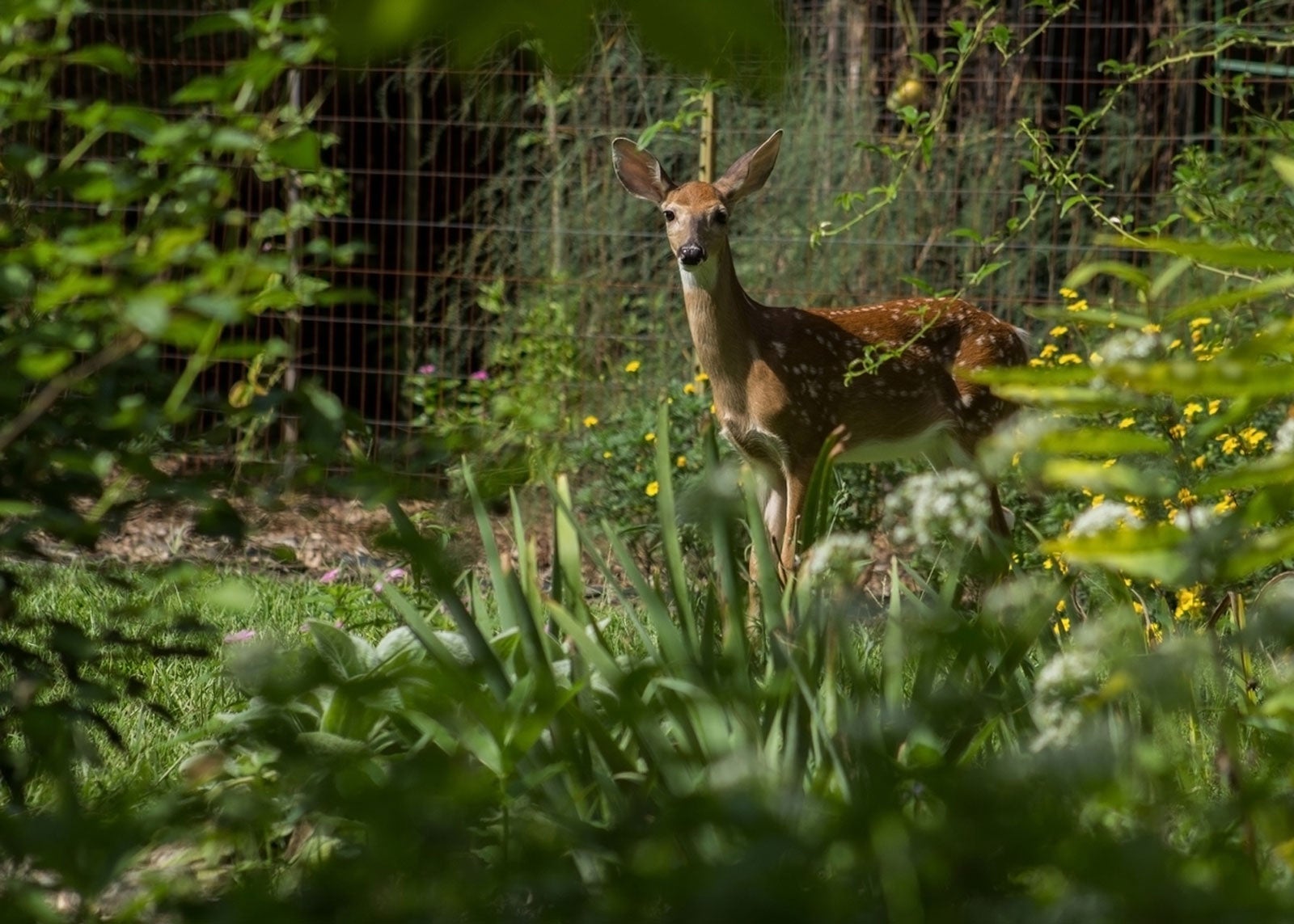Deer Proof Groundcovers – Groundcover Plants Deer Leave Alone


Your English ivy is eaten down to the ground. You've tried deer repellents, human hair, even soap, but nothing keeps the deer from chewing the leaves off your groundcover. Without their leaves, groundcovers fail to control the weeds. By now, you're probably wishing the deer would munch on the lawn instead!
Planting Groundcover to Deter Deer
In areas where deer are a problem, the long-term solution is to plant groundcovers that deer won't eat. In general, groundcover plants deer leave alone are those with thorny or prickly leaves and stems, herbs with pungent aromas, plants with hairy leaves and poisonous plants. Deer like tender young leaves, buds and nutrient-rich vegetation.
The key is finding deer-proof groundcovers that grow well in your area. Here are few that may work for you:
Shade-Loving Groundcovers Deer Won't Eat
- Lily-of-the-Valley (Convallaria majalis): The tiny little bell-shaped flowers are a wedding favorite. The emerald green leaves come up in early spring and last until frost to form a dense cluster of weed stopping foliage. These plants are perfect for deep shade areas and under trees. Lily-of-the-valley likes moist soil with a layer of organic mulch. Hardy in USDA zones 2 to 9.
- Sweet Woodruff (Galium odoratum): This perennial herb is well-known for its mat-forming growth habits. Sweet woodruff is a woodland plant that makes a great groundcover to deter deer. The 8- to 12-inch (20 to 30 cm.) plants have 6 to 8 lance-shaped leaves arranged in a swirl. Sweet woodruff produces delicate white flowers in the spring. Hardy in USDA zones 4 to 8.
- Wild Ginger (Asarum canadense): The heart-shaped leaves of this native woodland plant are naturally deer resistant. Although wild ginger is not related to the culinary version, the roots have the reminiscent aroma of ginger. It prefers moist, but well-drained soil and is hardy in USDA zones 5 to 8.
Full Sun to Partial Shade Deer-Proof Groundcovers
- Creeping Thyme (Thymus serpyllum): These low-growing edible herbs are prized for their thick, mat-forming growth and the blanket of color their blooms create. Tolerant of full sun and easy to maintain, creeping thyme has a strong scent that makes it the perfect groundcover to deter deer. Hardy in USDA zones 4 to 8.
- Japanese Sedge (Carex marrowii): This true sedge grows in a low mound with long bladed leaves similar to grass. Japanese sedge loves moisture and is suitable to plant around ponds and water features. Japanese sedge cultivars are easily maintained deer-proof groundcovers. Hardy in USDA zones 5 to 9.
- Lady's Mantle (Alchemilla mollis): This attractive herbaceous perennial has circular leaves with scalloped borders. The yellow flowers last several weeks and the plant reaches heights of 1 to 2 feet (30 to 60 cm.). It’s easily grown from seeds and prefers partial shade. Lady's mantle can be grown in full sun, however, leaf scorch can occur. Hardy in USDA zones 3 to 9.
It should be noted that no plant is 100% deer resistant. When times get tough and food sources dwindle, even these deer-proof groundcovers may be consumed. Applying commercial deer repellents during these times may provide sufficient protection to groundcovers to deter deer.
Sign up for the Gardening Know How newsletter today and receive a free copy of our e-book "How to Grow Delicious Tomatoes".

Laura Miller has been gardening all her life. Holding a degree in Biology, Nutrition, and Agriculture, Laura's area of expertise is vegetables, herbs, and all things edible. She lives in Ohio.